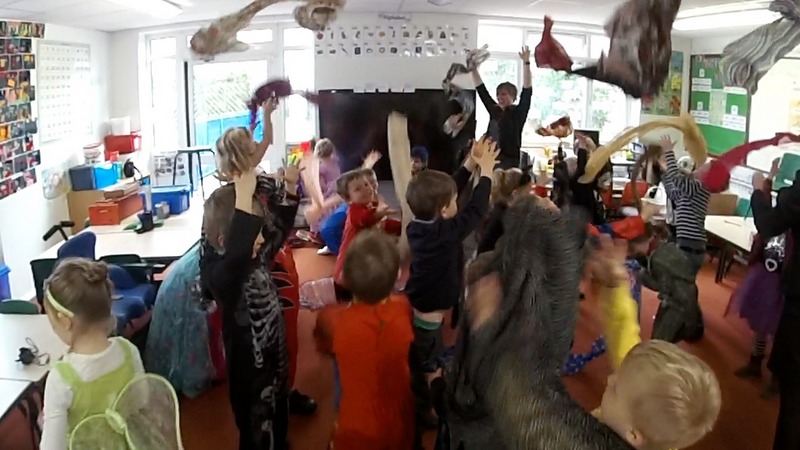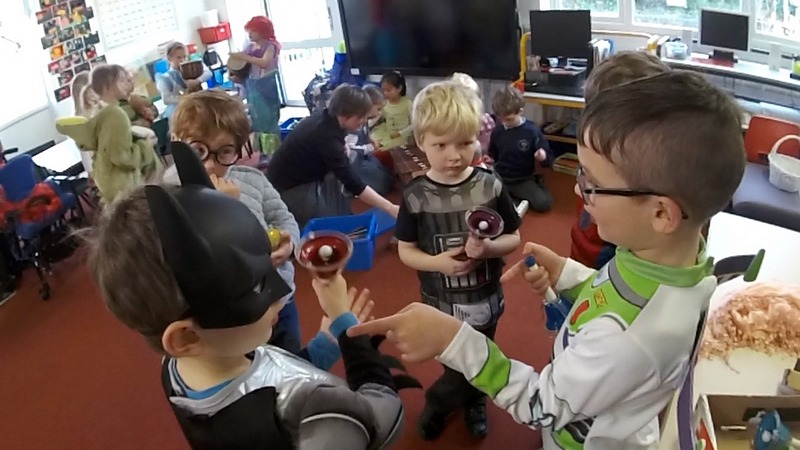This case study shows how the work of a peripatetic music teacher can support class teacher skills development as well as pupil learning.
What are the goals of the work?
The peripatetic music teacher liaises with the head teachers to establish the ethos and value attached to the Arts in each school setting. She liaises with the senior leadership and class teachers to ensure that her learning strategies align with the schools approach and that her music lesson plans dovetail with the music curriculum of the school.

The music teacher aims to develop children's musical skills, knowledge and understanding through performing, composing, listening and appraising. These are in line with the National Curriculum for Music and pupil outcomes, which are:
Key Stage 1 pupils can
- use their voices expressively and creatively by singing songs and speaking chants and rhymes;
- play tuned and untuned instruments musically;
- listen with concentration and understanding to a range of high-quality live and recorded music; and
- experiment with, create, select and combine sounds using the interrelated dimensions of music.
Key Stage 2 pupils can
- play and perform in solo and ensemble contexts, using their voices and playing musical instruments with increasing accuracy, fluency, control and expression;
- improvise and compose music for a range of purposes, using the interrelated dimensions of music;
- listen with attention to detail and recall sounds with increasing aural memory;
- use and understand staff and other musical notations;
- appreciate and understand a wide range of high-quality live and recorded music drawn from different traditions and from great composers and musicians; and
- develop an understanding of the history of music.

Personal goals
- Expressiveness, aesthetic sensitivity and discrimination; and
- Enjoyment, enthusiasm and interest.
Social goals
- Individual – group (solo, duo, small-group, ensemble) activity;
- Interpersonal skills development and relationships with others; and
- Teamwork and co-operation.
What is the context of the work?
Over the course of one day, for example, the music peripatetic teacher travels to two schools including a 'single form entry' infant school and a 'two form entry' primary school. The practitioner teaches classes of Reception, Years 1,2,3 and 4. This is a regular weekly commitment for the academic year and forms the regular statutory music session for the classes that she teaches in both schools.

The music teacher is employed by Norfolk Music Service; the schools 'buy in' the curriculum teacher services via the music service.
What is the content of the work?
The content of the work includes:
- Singing songs, speaking chants and rhymes and using stories to create patterns and soundscapes;
- Individual, paired, small and large group music making activities;
- Listening and responding with movement to live and recorded music;
- Whole class activities to create instrumental and vocal accompaniments; and
- Whole class games and activities to explore the musical elements of timbre, tempo, pitch, rhythm and structure.
What are the key features of the teaching and learning approach?
Key pedagogical approaches embrace:
- Whole class leader-centred and teacher modelling, with some opportunities for pupils to take a lead;
- Small group work;
- Pedagogic language being used to support learning and understanding;
- Activities that relate to, and build on, previous learning;
- Expectations of music leader being clear to all participants;
- No barriers to participation;
- Session designed to generates enthusiasm, concentration and energy from participants;
- Participants know that there will be opportunities to be spontaneous and share ideas; and
- Positive responses are encouraged towards, and confidence in, participating.
How is the work being reviewed?
Pupils receive regular aural feedback and the music teacher's observations assess pupil progress and inform future planning. The headteacher monitors the quality of the programme received from the music service and the peripatetic music teacher undergoes annual teacher appraisal with senior leaders at the music service.
What are the positive outcomes for children/young people?
By the end of each Key Stage, pupils are expected to know, apply and understand the matters, skills and processes specified in the National Curriculum for Music programme of study (see above).

What are the key features of teacher/leader behaviour that are enabling those positive outcomes?
Key features of the music specialist input include:
- Leading a fluent sequence of musical activities;
- Securing provision for technical, musical, social, personal and critical aspects;
- Ensuring that materials and resources match stage/age/of learners;
- Being well-prepared to meet requirements and aspirations of learners and to provide rich and relevant musical challenge to create, recreate, listen and respond;
- Fluency and energy that give appropriate pace and ensure motivation and involvement of learners; and
- Programmes and courses are reviewed regularly and developed with secure professional knowledge and skill.
What are the key features of context, content and activities that are enabling those positive outcomes?
The key features of the context include:
- The focus of sessions is understood and activities relate to and build on previous learning;
- The expectations of the music leader are clear to all participants;
- Sessions generates enthusiasm, concentration and energy from participants;
- Individuals know that they can make a valued individual contribution or response;
- Learners expect to be engaged in rich musical activities;
- There is a strong motivation to engage and readiness to learn;
- Positive responses to new materials and resources, to consolidating familiar work and confidence in participating; and
- The provision of an enabling environment that supports and includes all children.
What other factors in this case are contributing to those positive outcomes?
The head teachers of the participating schools value music education in general and the work of the practitioner in particular.
How replicable or adaptable is it?
The music teaching is provided by a very experienced practitioner.

In this case study the practitioner is a curriculum music teacher employed by the music service and services are 'bought in' by schools via the music service. The head teachers involved highly value the work and also consider this provision as excellent value for money. This model is replicated across the country and is in high demand by schools.
